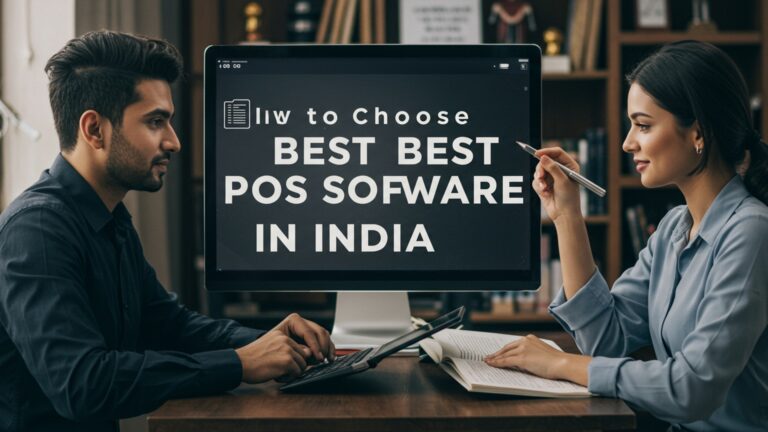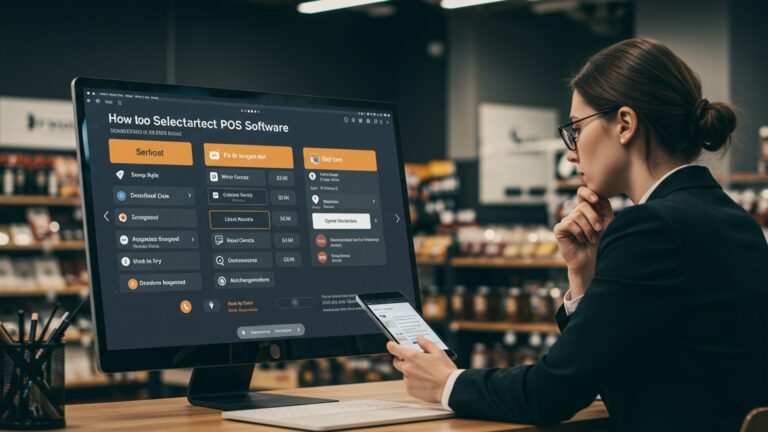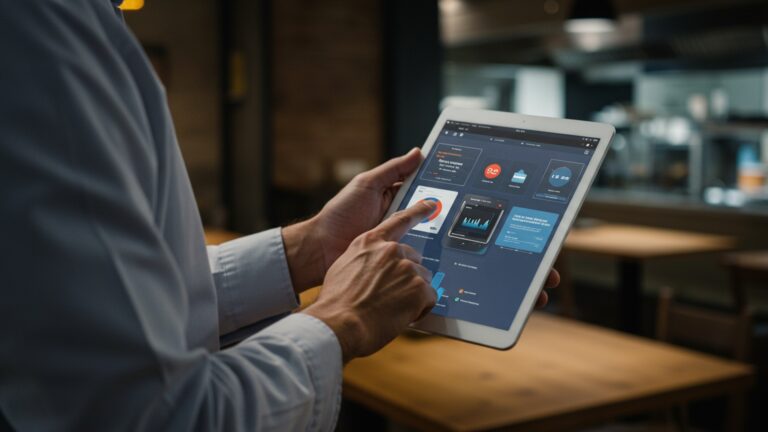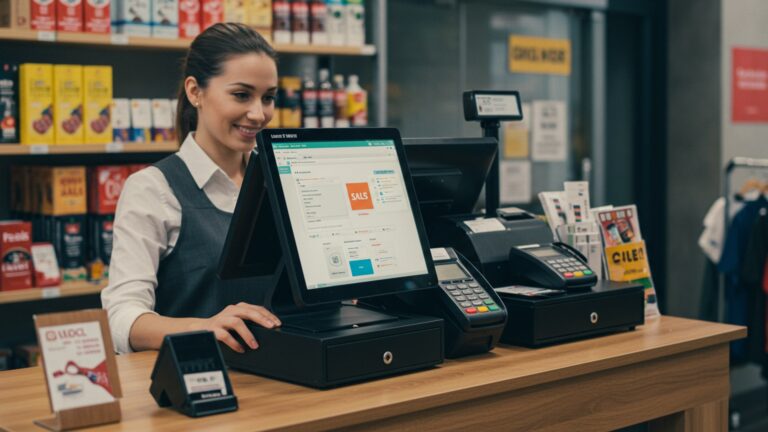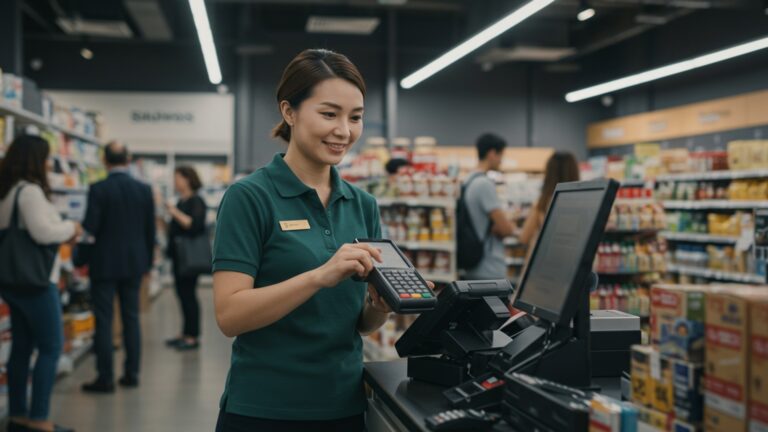How to Select the Right POS Software for Your Grocery Store
Navigating the complexities of modern grocery retail, from managing fluctuating fresh produce inventory to fulfilling diverse customer demands, hinges critically on robust backend technology. Today’s competitive landscape demands more than just transaction processing; a truly effective pos software for grocery store offers cloud-native solutions providing real-time inventory visibility, advanced analytics for sales forecasting. seamless integration for loyalty programs and self-checkout options. This strategic technology empowers grocers to optimize supply chain logistics, reduce waste. deliver personalized shopping experiences, directly impacting profitability in an era of rapid digital transformation and evolving consumer expectations.
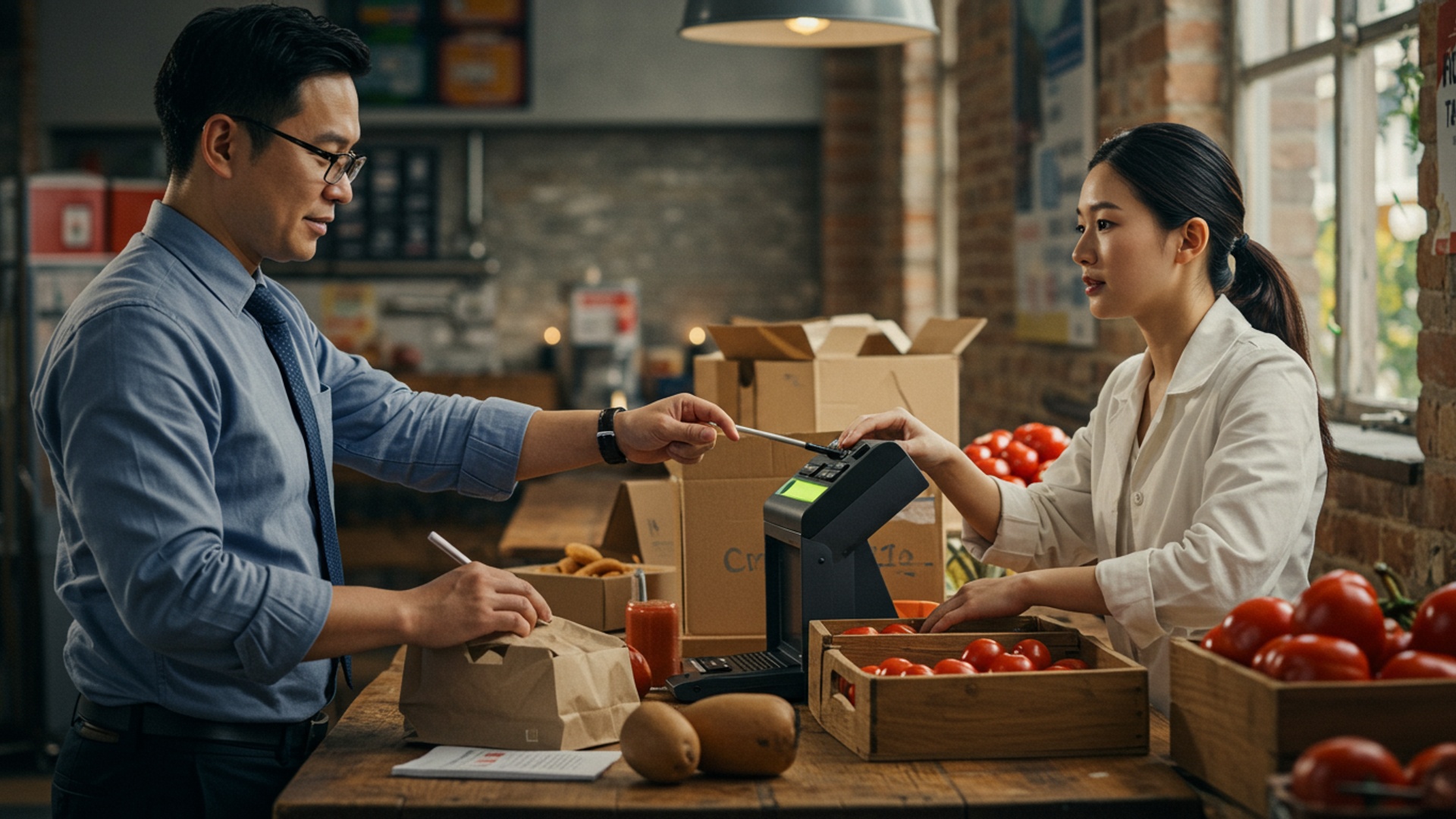
Understanding the Core of POS Software for Your Grocery Store
In the fast-paced retail environment, particularly within the grocery sector, efficiency and precision are paramount. At the heart of a modern grocery operation lies Point of Sale (POS) software. Far more than just a cash register, a robust pos software for grocery store is an integrated system designed to streamline every aspect of daily operations, from customer checkout to inventory management and beyond. It’s the central nervous system for your business, connecting sales, stock, staff. customer data into one cohesive platform.
Traditionally, a POS system was a simple terminal for processing sales. Today, it encompasses a comprehensive suite of tools. For a grocery store, this means handling a vast array of products, often with varying expiration dates, weights. promotions. The right POS software transforms these complex tasks into seamless, manageable processes, directly impacting profitability and customer satisfaction.
- Transaction Processing
- Inventory Management
- Customer Relationship Management (CRM)
- Reporting and Analytics
The fundamental role, enabling quick and accurate sales, including scanning barcodes, applying discounts. processing various payment methods.
Crucial for groceries, tracking stock levels, managing perishable goods, handling returns. automating reorder points.
Building loyalty programs, tracking purchase history. personalizing offers.
Generating insights into sales trends, peak hours, popular products. employee performance.
Essential Features for a Grocery Store POS System
Selecting a pos software for grocery store requires a deep dive into specific features that cater to the unique demands of this industry. Not all POS systems are created equal. a generic retail solution may fall short of a grocery store’s needs. Here are the non-negotiable features:
- Advanced Inventory Management
- Perishable Goods Tracking
- Weight-Based Pricing
- Supplier Management
- Recipe Management
- Scalability
- Robust Reporting and Analytics
- Sales by Department/Category
- Peak Hour Analysis
- Shrinkage Reports
- Customer Purchase Patterns
- Integrated Customer Loyalty Programs
- Payment Processing Flexibility
- Employee Management
- Multi-Store Capabilities
- Self-Checkout Integration
- Promotions and Discount Management
This is arguably the most critical feature for a grocery store. It must support:
Managing “first-in, first-out” (FIFO) or “first-expire, first-out” (FEFO) strategies, batch tracking. expiry date alerts to minimize waste.
Seamless integration with scales at the checkout or deli/produce counters.
Tracking vendor details, purchase orders. receiving goods efficiently.
For in-store delis or bakeries, managing ingredients and costs for prepared foods.
Your POS system should grow with your business. Whether you plan to add more checkout lanes, expand to multiple locations, or increase product lines, the software must accommodate these changes without requiring a complete overhaul.
Beyond basic sales reports, look for features that offer detailed insights into:
Understanding which sections of your store perform best.
Optimizing staffing levels.
Identifying potential loss due to spoilage, theft, or errors.
Tailoring promotions and stock.
Encourage repeat business with points systems, discounts. personalized offers based on purchase history. A good pos software for grocery store will have this built-in or offer seamless integration.
Support for various payment types, including EMV chip cards, contactless payments (NFC), mobile wallets (Apple Pay, Google Pay). gift cards. PCI DSS compliance is non-negotiable for security.
Track clock-in/out times, sales performance per employee, commission structures (if applicable). manage user permissions to control access to sensitive data.
If you operate or plan to open multiple grocery locations, the software should allow centralized management of inventory, pricing, promotions. reporting across all stores.
A growing trend in grocery, offering customers convenience and reducing labor costs. Ensure the POS can integrate with self-checkout kiosks.
The ability to easily set up and manage complex promotions, such as “buy one get one free,” loyalty discounts, bundle deals. seasonal sales, is critical for grocery stores.
Cloud-Based vs. On-Premise POS Software: A Comparison
When evaluating a pos software for grocery store, a fundamental decision involves choosing between cloud-based and on-premise systems. Each has distinct advantages and disadvantages:
| Feature | Cloud-Based POS | On-Premise POS |
|---|---|---|
| Data Storage | Data stored remotely on vendor’s servers, accessible via internet. | Data stored locally on your store’s servers. |
| Cost Structure | Typically subscription-based (SaaS), lower upfront cost, predictable monthly fees. | Higher upfront cost for software license and hardware; lower recurring fees (maintenance often extra). |
| Accessibility | Access data and manage operations from anywhere, on any device with internet. | Limited to local network access; remote access often requires complex setup. |
| Maintenance & Updates | Vendor handles all updates, security patches. maintenance automatically. | Requires your IT staff or third-party technicians for updates, security. troubleshooting. |
| Security | Vendor responsible for data security; often employs advanced encryption and protocols. | Your responsibility to manage and secure your local servers and network. |
| Offline Capability | Most modern cloud POS systems offer an offline mode for continued operation during internet outages, syncing when reconnected. | Typically functions without internet access (as data is local). |
| Customization | Generally less customizable, relying on vendor’s pre-built integrations and features. | High degree of customization possible. often requires significant development effort. |
For most modern grocery stores, a cloud-based pos software for grocery store offers superior flexibility, lower total cost of ownership over time. reduced IT burden. But, robust internet connectivity is a prerequisite, though many offer offline capabilities as a fallback.
Key Considerations Beyond Features
While features are vital, several other factors influence the long-term success of your chosen pos software for grocery store:
- Ease of Use and Training
A complex system will slow down your staff and lead to errors. Look for intuitive interfaces that minimize training time. As grocery stores often have high staff turnover, ease of onboarding new employees is crucial. A system with a clean, logical layout, similar to this snippet for adding a new product, can make a huge difference:
// Example of a user-friendly product creation flow 1. Navigate to "Inventory" -> "Add New Product" 2. Enter Product Name: Organic Fuji Apple 3. Select Category: Produce 4. Enter SKU: AFJ001 5. Specify Unit of Measure: per lb (or each) 6. Set Base Price: $2. 99 7. Enable Weight-Based Pricing: Yes 8. Add Supplier: Fresh Farms Inc. 9. Set Reorder Point: 50 lbs 10. Set Expiry Tracking: Yes (Optional: Enter initial batch expiry date) 11. Save
Issues can arise at any time, especially during peak hours. Evaluate the vendor’s support options: 24/7 availability, phone, email, chat. self-service knowledge bases. Real-world case study: “When our POS system went down during a holiday rush, having immediate 24/7 phone support from our vendor, Lightspeed, was a lifesaver. They walked us through a quick fix, minimizing downtime and saving potentially thousands in lost sales,” recounts Maria Rodriguez, owner of ‘Maria’s Market’.
Your POS handles sensitive customer data and financial transactions. Ensure it is PCI DSS compliant for payment security and offers features like user access controls, data encryption. regular security audits. Data breaches can be catastrophic for a business’s reputation and finances.
Your POS shouldn’t operate in a silo. Consider its ability to integrate with other essential business tools, such as:
- Accounting Software
- eCommerce Platforms
- Supplier Systems
- Marketing Tools
(e. g. , QuickBooks, Xero) to streamline financial reporting.
If you offer online ordering or delivery services.
For automated ordering and receiving.
For email campaigns and customer engagement.
Choose a vendor with a proven track record, positive customer reviews. a clear roadmap for future development. A stable partner ensures ongoing support and innovation.
Look beyond the sticker price. Factor in hardware costs, subscription fees, installation, training, ongoing support. potential integration fees. A cheaper upfront option might be more expensive in the long run due to hidden costs or lack of features.
Implementing Your New POS System: An Actionable Guide
Once you’ve selected the ideal pos software for grocery store, successful implementation is key. This isn’t just about plugging in hardware; it’s a strategic rollout:
- Detailed Planning
- Data Migration
- Hardware Setup
- Staff Training
- Testing
- Go-Live and Post-Implementation Support
Map out your current processes and identify areas for improvement with the new system. Define clear objectives and a timeline. This includes cataloging all inventory, setting up pricing rules. configuring employee profiles.
This is a critical step. Carefully transfer existing product data (SKUs, prices, descriptions), customer data. historical sales data into the new system. Work closely with your vendor to ensure accuracy and minimize disruption.
Install POS terminals, barcode scanners, receipt printers, cash drawers. integrated scales. Ensure network connectivity is robust and reliable for all devices.
Comprehensive training is non-negotiable. Conduct hands-on sessions for all staff members, focusing on their specific roles (cashiers, inventory managers, store managers). Role-play various scenarios, including sales, returns, promotions. troubleshooting common issues. Consider a phased rollout or “soft launch” during slower periods.
Before going live, thoroughly test every function. Process mock transactions, perform returns, check inventory updates. run reports to ensure everything works as expected.
Have vendor support on standby during your initial launch. Monitor performance closely and address any immediate issues. Establish a feedback loop with your staff to identify pain points and optimize usage.
As industry experts at the Retail Solutions Providers Association (RSPA) often emphasize, the true value of a POS system isn’t just its features. how well it integrates into your daily workflow and empowers your team. A well-implemented pos software for grocery store can transform your operations, driving efficiency, reducing waste. ultimately, boosting your bottom line.
Conclusion
Selecting the right POS software for your grocery store isn’t merely a technological upgrade; it’s a strategic investment in efficiency and customer satisfaction. It requires a thoughtful evaluation, prioritizing features like robust inventory management for perishables, rapid checkout processing for those busy Saturday mornings. seamless integration with your existing operations. My personal advice is to always conduct a thorough trial period, even if it’s just a demo. Imagine a peak hour rush: does the system feel intuitive and quick enough for your cashiers to handle a long line of customers buying variable-weight produce and promotional items like “buy one get one free” organic berries without a hitch? I’ve seen firsthand how a well-chosen system, especially one that leverages current trends like integration with local delivery services, can transform a stressful day into a smooth operation. This isn’t just software; it’s the heart of your daily transactions, empowering your staff and delighting your customers. Make that informed decision. watch your grocery store thrive as a result of your proactive choice.
More Articles
How to Optimize Your Grocery Store with the Right POS Software Solutions
How to Leverage Cloud Based POS Software for Scalable Business Growth
Guide to Implementing Mobile POS Software for Flexible Business Transactions
How to Choose the Best POS Software for Your Retail Store Success
FAQs
Where do I even start when looking for POS software for my grocery store?
Begin by listing your store’s specific needs. Think about daily operations like checkout speed, inventory tracking, customer management. reporting. What are your biggest pain points with your current system, or what do you hope a new system will solve?
What are the absolute must-have features for a grocery store POS?
Essential features include robust inventory management (handling spoilage, multiple units of measure, batch tracking), quick and easy checkout with barcode scanning, scale integration, customer loyalty programs, detailed sales reporting. employee management. Don’t forget seamless integration with payment processors.
How crucial is it for the software to be easy for my staff to learn and use?
Extremely crucial! A user-friendly interface reduces training time, minimizes errors. speeds up transactions. Your cashiers will be using it constantly, so a clunky or complicated system can lead to frustration and slow lines, impacting customer experience.
Should I consider a cloud-based or on-premise POS system?
Cloud-based systems are generally more flexible and accessible from anywhere, offer automatic updates. often have lower upfront costs. On-premise systems give you more control over your data and hardware but require more IT maintenance. For most modern grocery stores, cloud-based offers significant advantages.
What about managing my inventory with the POS? Is it really that powerful?
A good POS is your inventory powerhouse! It should track items in real-time, manage stock levels across different departments, alert you to low stock, help with ordering. even handle returns and spoilage efficiently. This prevents stockouts and reduces waste, directly impacting your bottom line.
Can the POS help me with customer loyalty programs and promotions?
Absolutely! Many modern POS systems come with built-in CRM (Customer Relationship Management) tools that allow you to create loyalty programs, track customer purchase history, offer targeted promotions. even manage gift cards. This helps you build stronger customer relationships and encourage repeat business.
What should I look for regarding customer support and training?
Don’t overlook this! Great customer support is crucial, especially when you’re just getting started or face a technical issue during peak hours. Look for providers offering 24/7 support, multiple contact methods (phone, chat, email). comprehensive training resources for your team.

